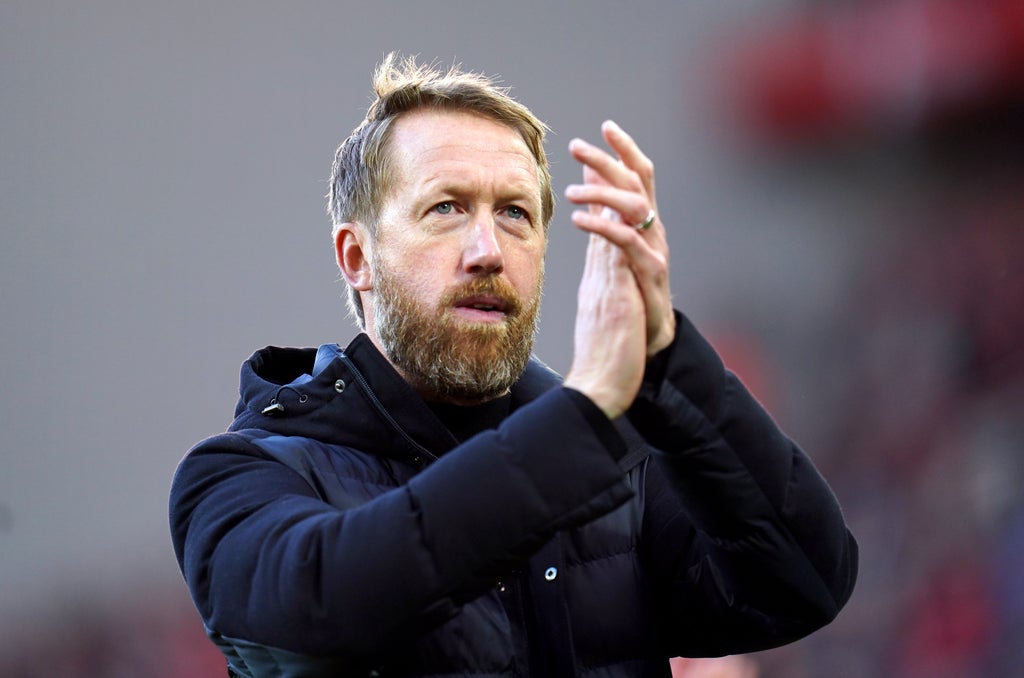
Dan Burn’s transfer from Brighton to Newcastle made few murmurs on football’s deadline day seismograph, but it was an intriguing decision by Graham Potter to allow a versatile defender and semi-regular starter to join a rival Premier League club, and perhaps revealed something telling about Brighton’s plans to evolve.
Without time to source an adequate replacement, Brighton were well within their rights to tell Burn he was staying put. His departure follows Ben White’s exit last summer and leaves Potter’s squad looking very thin defensively, especially given their tendency to play a back three and wing-backs. Burn’s sale leaves behind only six senior defenders by trade – Lewis Dunk, Shane Duffy, Adam Webster, Joel Veltman, Marc Cucurella and Tariq Lamptey.
So, why sell? Burn’s own wishes were a factor here: he grew up supporting Newcastle and a move to St James’ Park was the fulfilment of a childhood dream. “I can’t wait to step out in the shirt and to see what it feels like,” he said. “From sitting in the East Stand as a kid to now, it’s crazy.”
Financially it also made sense. For the 29-year-old Burn there were unlikely to many better opportunities to take up a two-and-a-half-year contract and a bumper pay rise; likewise for Brighton, who rejected Newcastle’s initial two offers, a sale of £13m meant good business for a player who turns 30 in May and who cost £3m from Wigan Athletic in 2018. It is the second-highest sale in Brighton’s history after White’s £50m switch to Arsenal. “We were not actively looking to sell Dan during this window,” admitted Potter, “but this represents a very good transfer for our club and the player.”

But another significant reason Potter reluctantly accepted Burn’s sale was almost certainly tactical. Last season Brighton started 30 of 38 Premier League games with a back three/five and only eight games with a back four, so the manager relied heavily on versatile defenders like Burn and Veltman to operate both at centre-back and at wing-back. This season the shape has slowly shifted: Potter started nine of the past 12 league games with a back four, including five of the last six in an impressive unbeaten run.
Tactically speaking, Brighton’s season so far can be split either side of their trip to Anfield on 30 October: before the 2-2 draw with Liverpool they almost exclusively used a back five, and since then they have predominantly used a back four. Their expected goals per game has improved from 1.1 to 1.3, while their expected goals conceded has reduced from 1.4 to 1.0. There are other factors at play in that improved form but it suggests Brighton can be just as defensively stable with a back four, and it goes some way to explaining why a defender’s transfer was sanctioned.
Is this the next evolution of Brighton under Potter?
Playing a back four has allowed Potter to deploy an extra attacker, and their recent approach has been noticeably more adventurous. The line-up in the 1-1 draw at Leicester at the end of January was filled with forward-thinking players in a notional 4-3-1-2 formation: Leandro Trossard and Neal Maupay led the attack with Jakub Moder in behind, Pascal Gross and Alexis Mac Allister pushed forward from the sides of a diamond midfield, and full-backs Veltman and Cucurella were given license to push up. In an excellent performance against Crystal Place a week earlier, a similar Brighton setup dominated possession and chances and were unfortunate to only draw.
Potter is never one to stick to a particular formation for long but a back four could now form the foundation of the rest of their season. Duffy and Dunk are fit after recent ankle and knee injuries respectively (Brighton’s improvement has come about despite the captain’s absence), while Lamptey’s gradual reintroduction to the first team has freed Veltman from right-back duties to provide central cover. There are only 16 more league games to get through before the hierarchy can reassess defensive options this summer.
One source at Brighton also told The Independent that the club’s crop of promising young defenders coming through the academy made Burn’s sale easier to accept. Technical director Dan Ashworth told the excellent Training Ground Guru podcast how, when a gap opens up in the senior squad, the club’s first port of call is to consult academy manager John Morling and Under-23s manager Andrew Crofts over the readiness of youth prospects to step up. The 19-year-old defender Haydon Roberts is one example: he had a successful loan spell with Rochdale last season and has featured for Brighton’s senior side in the Carabao Cup. There was talk of Roberts going out on loan again this month, but he remained at the club. Before Burn’s sale, Potter said: “It is difficult for Haydon, he is competing in a really strong area of the pitch for us. I think he has to be patient.” There is now one less senior player in his path.
As Potter put it, Burn’s transfer looks like a good move for all parties. It is a welcome fee for Brighton and, barring a defensive injury crisis or Covid outbreak, they can get by without him as key players return from injury and youth prospects plug the gap, particularly if Potter is set on playing a back four that has seen performances improve. And the manager’s acceptance of Burn’s sale suggests the recent more adventurous, bold Brighton could be here to stay.







